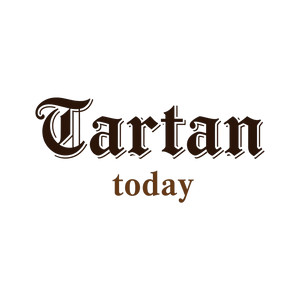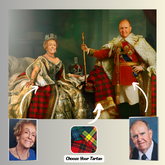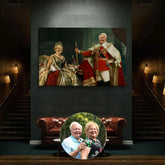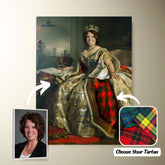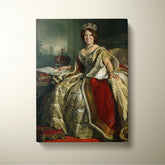-
Personalized Clan Baillie Ancient Tartan Bagpipe Ornament with Custom Name – Scottish Christmas Tree Decoration ER19
Personalized Clan Baillie Ancient Tartan Bagpipe Ornament with Custom Name – Scottish Christmas Tree Decoration ER19Celebrate your Scottish heritage with this unique wood & acrylic tartan ornament. Perfect as a personalized Christmas decoration or a meaningful gift for friends and relatives on special occasions...- From $19.99 USD
$25.99 USD- From $19.99 USD
- Unit price
- per
Save $6.00 -
Personalized Clan Baillie Ancient Tartan Drummer Ornament with Custom Name – Scottish Christmas Tree Decoration FI25
Personalized Clan Baillie Ancient Tartan Drummer Ornament with Custom Name – Scottish Christmas Tree Decoration FI25Celebrate your Scottish heritage with this unique wood & acrylic tartan ornament. Perfect as a personalized Christmas decoration or a meaningful gift for friends and relatives on special occasions...- From $19.99 USD
$25.99 USD- From $19.99 USD
- Unit price
- per
Save $6.00 -
Personalized Clan Baillie Modern Tartan Bagpipe Ornament with Custom Name – Scottish Christmas Tree Decoration JX97
Personalized Clan Baillie Modern Tartan Bagpipe Ornament with Custom Name – Scottish Christmas Tree Decoration JX97Celebrate your Scottish heritage with this unique wood & acrylic tartan ornament. Perfect as a personalized Christmas decoration or a meaningful gift for friends and relatives on special occasions...- From $19.99 USD
$25.99 USD- From $19.99 USD
- Unit price
- per
Save $6.00 -
Clan Baillie Ancient Tartan Crest Round Ceramic Ornament XP57 - Baillie Ancient Tartan
Clan Baillie Ancient Tartan Crest Round Ceramic Ornament XP57 One of the best things about Christmas is that it gives you an excuse to dress up your home with all of the lovely ornaments we associate with the holiday season. With so many different...- From $19.25 USD
- From $19.25 USD
- Unit price
- per
-
Baillie Ancient Tartan
-
Clan Baillie Ancient Tartan Crest Pillow Cover EA80 - Baillie Ancient Tartan Clan
Baillie Ancient Tartan Crest Pillow Cover - Tartan Cushion Cover Product detail: Made of 50% cotton / 50% polyester material, soft and comfortable texture. With pre-shrunk fabric, machine washable at 60. Zippered opening style. Both functional and decorative.- $25.55 USD
- $25.55 USD
- Unit price
- per
-
Baillie Ancient Tartan Clan
-
Personalized Clan Baillie Modern Tartan Drummer Ornament with Custom Name – Scottish Christmas Tree Decoration LV46
Personalized Clan Baillie Modern Tartan Drummer Ornament with Custom Name – Scottish Christmas Tree Decoration LV46Celebrate your Scottish heritage with this unique wood & acrylic tartan ornament. Perfect as a personalized Christmas decoration or a meaningful gift for friends and relatives on special occasions...- From $19.99 USD
$25.99 USD- From $19.99 USD
- Unit price
- per
Save $6.00 -
Personalized Clan Baillieville Reproduction Tartan Bagpipe Ornament with Custom Name – Scottish Christmas Tree Decoration CE74
Personalized Clan Baillieville Reproduction Tartan Bagpipe Ornament with Custom Name – Scottish Christmas Tree Decoration CE74Celebrate your Scottish heritage with this unique wood & acrylic tartan ornament. Perfect as a personalized Christmas decoration or a meaningful gift for friends and relatives on special occasions...- From $19.99 USD
$25.99 USD- From $19.99 USD
- Unit price
- per
Save $6.00 -
Personalized Clan Baillieville Modern Tartan Bagpipe Ornament with Custom Name – Scottish Christmas Tree Decoration PQ36
Personalized Clan Baillieville Modern Tartan Bagpipe Ornament with Custom Name – Scottish Christmas Tree Decoration PQ36Celebrate your Scottish heritage with this unique wood & acrylic tartan ornament. Perfect as a personalized Christmas decoration or a meaningful gift for friends and relatives on special occasions...- From $19.99 USD
$25.99 USD- From $19.99 USD
- Unit price
- per
Save $6.00 -
Personalized Clan Baillieville Ancient Tartan Bagpipe Ornament with Custom Name – Scottish Christmas Tree Decoration EN32
Personalized Clan Baillieville Ancient Tartan Bagpipe Ornament with Custom Name – Scottish Christmas Tree Decoration EN32Celebrate your Scottish heritage with this unique wood & acrylic tartan ornament. Perfect as a personalized Christmas decoration or a meaningful gift for friends and relatives on special occasions...- From $19.99 USD
$25.99 USD- From $19.99 USD
- Unit price
- per
Save $6.00 -
Personalized Clan Baillie Reproduction Tartan Bagpipe Ornament with Custom Name – Scottish Christmas Tree Decoration JD13
Personalized Clan Baillie Reproduction Tartan Bagpipe Ornament with Custom Name – Scottish Christmas Tree Decoration JD13Celebrate your Scottish heritage with this unique wood & acrylic tartan ornament. Perfect as a personalized Christmas decoration or a meaningful gift for friends and relatives on special occasions...- From $19.99 USD
$25.99 USD- From $19.99 USD
- Unit price
- per
Save $6.00 -
Personalized Clan Baillie of Polkemmet Reproduction Tartan Bagpipe Ornament with Custom Name – Scottish Christmas Tree Decoration FU37
Personalized Clan Baillie of Polkemmet Reproduction Tartan Bagpipe Ornament with Custom Name – Scottish Christmas Tree Decoration FU37Celebrate your Scottish heritage with this unique wood & acrylic tartan ornament. Perfect as a personalized Christmas decoration or a meaningful gift for friends and relatives on...- From $19.99 USD
$25.99 USD- From $19.99 USD
- Unit price
- per
Save $6.00 -
Personalized Clan Baillie of Polkemmet Red Reproduction Tartan Bagpipe Ornament with Custom Name – Scottish Christmas Tree Decoration OE48
Personalized Clan Baillie of Polkemmet Red Reproduction Tartan Bagpipe Ornament with Custom Name – Scottish Christmas Tree Decoration OE48Celebrate your Scottish heritage with this unique wood & acrylic tartan ornament. Perfect as a personalized Christmas decoration or a meaningful gift for friends and relatives...- From $19.99 USD
$25.99 USD- From $19.99 USD
- Unit price
- per
Save $6.00 -
Personalized Clan Baillie of Polkemmet Red Modern Tartan Bagpipe Ornament with Custom Name – Scottish Christmas Tree Decoration FJ44
Personalized Clan Baillie of Polkemmet Red Modern Tartan Bagpipe Ornament with Custom Name – Scottish Christmas Tree Decoration FJ44Celebrate your Scottish heritage with this unique wood & acrylic tartan ornament. Perfect as a personalized Christmas decoration or a meaningful gift for friends and relatives...- From $19.99 USD
$25.99 USD- From $19.99 USD
- Unit price
- per
Save $6.00 -
Personalized Clan Baillie of Polkemmet Red Ancient Tartan Bagpipe Ornament with Custom Name – Scottish Christmas Tree Decoration YT24
Personalized Clan Baillie of Polkemmet Red Ancient Tartan Bagpipe Ornament with Custom Name – Scottish Christmas Tree Decoration YT24Celebrate your Scottish heritage with this unique wood & acrylic tartan ornament. Perfect as a personalized Christmas decoration or a meaningful gift for friends and relatives...- From $19.99 USD
$25.99 USD- From $19.99 USD
- Unit price
- per
Save $6.00 -
Personalized Clan Baillie of Polkemmet Modern Tartan Bagpipe Ornament with Custom Name – Scottish Christmas Tree Decoration LR58
Personalized Clan Baillie of Polkemmet Modern Tartan Bagpipe Ornament with Custom Name – Scottish Christmas Tree Decoration LR58Celebrate your Scottish heritage with this unique wood & acrylic tartan ornament. Perfect as a personalized Christmas decoration or a meaningful gift for friends and relatives on...- From $19.99 USD
$25.99 USD- From $19.99 USD
- Unit price
- per
Save $6.00 -
Personalized Clan Baillie of Polkemmet Ancient Tartan Bagpipe Ornament with Custom Name – Scottish Christmas Tree Decoration VL98
Personalized Clan Baillie of Polkemmet Ancient Tartan Bagpipe Ornament with Custom Name – Scottish Christmas Tree Decoration VL98Celebrate your Scottish heritage with this unique wood & acrylic tartan ornament. Perfect as a personalized Christmas decoration or a meaningful gift for friends and relatives on...- From $19.99 USD
$25.99 USD- From $19.99 USD
- Unit price
- per
Save $6.00 -
Personalized Clan Baillie of Lamington Reproduction Tartan Bagpipe Ornament with Custom Name – Scottish Christmas Tree Decoration TX76
Personalized Clan Baillie of Lamington Reproduction Tartan Bagpipe Ornament with Custom Name – Scottish Christmas Tree Decoration TX76Celebrate your Scottish heritage with this unique wood & acrylic tartan ornament. Perfect as a personalized Christmas decoration or a meaningful gift for friends and relatives on...- From $19.99 USD
$25.99 USD- From $19.99 USD
- Unit price
- per
Save $6.00 -
Personalized Clan Baillie of Lamington Modern Tartan Bagpipe Ornament with Custom Name – Scottish Christmas Tree Decoration BP20
Personalized Clan Baillie of Lamington Modern Tartan Bagpipe Ornament with Custom Name – Scottish Christmas Tree Decoration BP20Celebrate your Scottish heritage with this unique wood & acrylic tartan ornament. Perfect as a personalized Christmas decoration or a meaningful gift for friends and relatives on...- From $19.99 USD
$25.99 USD- From $19.99 USD
- Unit price
- per
Save $6.00 -
Personalized Clan Baillie of Lamington Ancient Tartan Bagpipe Ornament with Custom Name – Scottish Christmas Tree Decoration JH15
Personalized Clan Baillie of Lamington Ancient Tartan Bagpipe Ornament with Custom Name – Scottish Christmas Tree Decoration JH15Celebrate your Scottish heritage with this unique wood & acrylic tartan ornament. Perfect as a personalized Christmas decoration or a meaningful gift for friends and relatives on...- From $19.99 USD
$25.99 USD- From $19.99 USD
- Unit price
- per
Save $6.00 -
Personalized Clan Baillie of Bennachie Modern Tartan Bagpipe Ornament with Custom Name – Scottish Christmas Tree Decoration BI30
Personalized Clan Baillie of Bennachie Modern Tartan Bagpipe Ornament with Custom Name – Scottish Christmas Tree Decoration BI30Celebrate your Scottish heritage with this unique wood & acrylic tartan ornament. Perfect as a personalized Christmas decoration or a meaningful gift for friends and relatives on...- From $19.99 USD
$25.99 USD- From $19.99 USD
- Unit price
- per
Save $6.00
Ex: Your Tartan + Product
Popular Products
Turn Me Royal Personalized Portrait from Your Photo, Custom Tartan. Custom Canvas Wall Art as Gift for Men
- From $32.45 USD
- From $32.45 USD
- Unit price
- / per
Royalty Couple Personalized Portrait from Your Photo, Custom Tartan. Custom Canvas Wall Art
- From $47.45 USD
- From $47.45 USD
- Unit price
- / per
The Queen Personalized Portrait from Your Photo, Custom Tartan. Custom Canvas Wall Art as Gift for Women
- From $32.45 USD
- From $32.45 USD
- Unit price
- / per
Which Clan Are You From?
- Apron
- Baillie
- Baillie (Highland Society of London) Ancient
- Baillie (Highland Society of London) Modern
- Baillie (Highland Society of London) Reproduction
- Baillie Ancient
- Baillie Ancient Gnome
- Baillie Ancient Tartan
- Baillie clanBaillie tartanPillow Cover
- Baillie Dress
- Baillie Dress Ancient
- Baillie Dress Modern
- Baillie Dress Reproduction
- Baillie Highland Society
- Baillie Modern
- Baillie Modern Gnome
- Baillie Modern Tartan
- Baillie of Bennachie Modern
- Baillie of Lamington
- Baillie of Lamington Ancient
- Baillie of Lamington Modern
- Baillie of Lamington Reproduction
- Baillie of Lamington Weathered
- Baillie of Polkemmet
- Baillie of Polkemmet Ancient
- Baillie of Polkemmet Modern
- Baillie of Polkemmet Red
- Baillie of Polkemmet Red Ancient
- Baillie of Polkemmet Red Modern
- Baillie of Polkemmet Red Reproduction
- Baillie of Polkemmet Red Weathered
- Baillie of Polkemmet Reproduction
- Baillie of Polkemmet Weathered
- Baillie Reproduction
- Baillie Tartan
- Baillie Tartan Clan
- Baillie Weathered
- Baillie William Wilson
- Baillieville Ancient
- Baillieville Modern
- Baillieville Reproduction
- Scott
- Wilson
List Of Tartan
-
Clan A
- Abercrombie Tartan
- Aberdeen Tartan
- Abernethy Tartan
- Adair Tartan
- Adam Tartan
- Ayrshire Tartan
- Agnew Tartan
- Aikenhead Tartan
- Ainslie Tartan
- Aiton Tartan
- Allan Tartan
- Alexander Tartan
- Allardice Tartan
- Allison Tartan
- Anderson Tartan
- Angus Tartan
- Anstruther Tartan
- Arbuthnot Tartan
- Armstrong Tartan
- Arnott Tartan
- Auchinleck Tartan
- Ayrshire Tartan
-
Clan B
- Baillie Tartan
- Bain Tartan
- Baird Tartan
- Balfour Tartan
- Bannatyne Tartan
- Bannerman Tartan
- Barclay Tartan
- Baxter Tartan
- Beaton Tartan
- Bell Tartan
- Belshes Tartan
- Bethune Tartan
- Beveridge Tartan
- Binning Tartan
- Bisset Tartan
- Blackadder Tartan
- Blackstock Tartan
- Black Watch Tartan
- Blair Tartan
- Blane Tartan
- Blyth Tartan
- Borthwick Tartan
- Boswell Tartan
- Bowie Tartan
- Boyd Tartan
- Boyle Tartan
- Brisbane Tartan
- Brodie Tartan
- Brown/ Broun Tartan
- Bruce Tartan
- Buccleuch Tartan
- Buchan Tartan
- Buchanan Tartan
- Burnett Tartan
- Burns Tartan
- Butter Tartan
- Byres Tartan
-
Clan C
- Cairns Tartan
- Calder Tartan
- Callander Tartan
- Cameron Tartan
- Campbell Tartan
- Campbell of Breadalbane Tartan
- Campbell of Cawdor Tartan
- Carmichael Tartan
- Carnegie Tartan
- Carruthers Tartan
- Cathcart Tartan
- Chalmers Tartan
- Charteris Tartan
- Chattan Tartan
- Cheyne Tartan
- Chisholm Tartan
- Christie Tartan
- Clark Tartan
- Clelland Tartan
- Clephan Tartan
- Clergy Tartan
- Cochrane Tartan
- Cockburn Tartan
- Colquhoun Tartan
- Colville Tartan
- Cooper Tartan
- Couper Tartan
- Craig Tartan
- Cranstoun Tartan
- Crawford Tartan
- Crichton Tartan
- Crief District Tartan
- Crosbie Tartan
- Cumming Tartan
- Cunningham Tartan
- Currie Tartan
- Clan D
- Clan E
- Clan F
- Clan G
- Clan H
- Clan I
- Clan J
- Clan K
- Clan L
-
Clan M
- Maitland Tartan
- Malcolm Tartan
- Mar Tartan
- Marjoribanks Tartan
- Maxtone Tartan
- Matheson Tartan
- Maule Tartan
- Maxwell Tartan
- Meldrum Tartan
- Melville Tartan
- Menzies Tartan
- Mercer Tartan
- Middleton Tartan
- Moffat Tartan
- Moncrieffe Tartan
- Montgomery Tartan
- Monypenny Tartan
- Moncreiffe Tartan
- Monteith Tartan
- Morrison Tartan
- Mouat Tartan
- Moubray Tartan
- Mow Tartan
- Muir_More Tartan
- Muirhead Tartan
- Munro Tartan
- Murray Tartan
- Murray of Atholl Tartan
-
Clan Mc/Mac
- MacAlister Tartan
- MacArthur Tartan
- MacAlpine Tartan
- MacAulay Tartan
- MacBain Tartan
- MacBean Tartan
- MacBeth Tartan
- MacCallum Tartan
- MacCraig Tartan
- MacColl Tartan
- MacCorquodale Tartan
- MacDiarmid Tartan
- MacDonald Tartan
- MacDonald of Clanranald Tartan
- MacDonald of Sleat Tartan
- MacDonnell of Glengarry Tartan
- MacDonnell of Keppoch Tartan
- MacDougall Tartan
- MacDowall Tartan
- MacDuff Tartan
- MacEwen_MacEwan Tartan
- MacEdward Tartan
- MacFarlane Tartan
- MacGill Tartan
- MacGillivray Tartan
- MacGregor Tartan
- MacGowan (McGowan) Tartan
- MacHardy Tartan
- MacIan Tartan
- MacInnes Tartan
- MacIntyre Tartan
- MacKay Tartan
- MacKillop Tartan
- MacKellar Tartan
- Mackinlay Tartan
- MacKenzie Tartan
- Mackie Tartan
- MacKinnon Tartan
- MacKintosh / MacIntosh Tartan
- MacLeod Tartan
- MacMillan Tartan
- MacNab Tartan
- MacNaughton Tartan
- MacNeil / MacNeill Tartan
- MacNeil of Colonsay Tartan
- MacNicol Tartan
- MacPhail Tartan
- MacPhee_MacFie Tartan
- MacPherson Tartan
- MacQuarrie Tartan
- MacQueen Tartan
- MacRae Tartan
- MacRow Tartan
- MacSporran Tartan
- MacTaggart Tartan
- MacTavish Tartan
- MacThomas Tartan
- McCorquodale Tartan
- McCulloch Tartan
- McFadzen Tartan
- McGeachie Tartan
- McIver Tartan
- McKerrell Tartan
- Clan N
- Clan O
- Clan P
- Clan R
-
Clan S
- Sandilands Tartan
- Scott Tartan
- Scrymgeour Tartan
- Selkirk Tartan
- Sempill Tartan
- Seton Tartan
- Shaw Tartan
- Shepherd Tartan
- Sinclair Tartan
- Skene Tartan
- Skirving Tartan
- Smith Tartan
- Somerville Tartan
- Spalding Tartan
- Spens Tartan
- Spottiswood Tartan
- Stevenson Tartan
- Stewart Tartan
- Stewart of Appin Tartan
- Stirling Tartan
- Strachan Tartan
- Straiton Tartan
- Strange Tartan
- Strathclyde District Tartan
- Stuart of Bute Tartan
- Sutherland Tartan
- Swinton Tartan
- Clan T
- Clan U W Y
- Request Your Clan
Clan Baillie (Baillie Tartan)
1. About Clan Baillie (Baillie Tartan)
2. Clan Baillie History (Baillie Tartan)
The surname Baillie is most likely derived from the French word bailif, which was used to refer to an estate manager.
The name was changed following the independence wars because of its association with the hated Balliol kings, contrary to the widespread belief that it originated with the surname Bailliol.
William de Baillie makes his first appearance in a record in 1311 when he serves on a jury for an inquest into forfeited lands. David II knighted Willaim Baillie of Hoprig in 1357, and he subsequently received a royal charter for the barony of Lamington.
A long Baillie dynasty that included the Baillies of Carphin, Park, Jerviston, Dunrogal, Carnbroe, Castlecarry, Provand, and Dochfour began with this.
Inverness Castle's constable was Alexander Baillie. James IV appointed Cuthbert Bailllie of Carphin Lord High Treasurer in 1512.
Another well-known Baillie was Sir William Ballie of Provand, who served as the Lord President of the Court of Session from 1565 until 1595 and was created "Lord Provand."
Sir William Baillie's properties were forfeited as a result of his participation in the Battle of Langside, just like the fortunes of many other Scottish families during the reign of Mary, Queen of Scots.
The Marquis of Montrose defeated both his grandson and himself. These Baillies were ardent and vocal Protestants. Unfortunately, James VII's succession was attempted, and Robert Baillie of Jerviswood was involved.
He was executed in 1684, and his family escaped to Holland. The family properties were returned following the fall of James VII in 1688.
This branch of the family acquired the earldom of Haddington through marriage, while the Dochfour Baillies also acquired significant lands by Loch Ness through marriage.
3. Clan Baillie Tartans
3.1 Baillie Modern (also called Baillie of Polkemett, Green)
The one that is most frequently worn was created in 1937 by Mr. A. W. Geddes of Messrs. William Anderson, Edinburgh. It is based on the MacKenzie tartan, but instead of a single stripe, there are three delicate white lines on the green.
It was created for the Polkemett Barony's owners, the Baillies of Polkemett. Around the same time, Geddes also gave the Baillies a crimson sett.
3.2 Baillie of Polkemett, Red
3.3 Baillie (Wilsons of Bannockburn)
Adapted from the William Wilson and Sons, Bannockburn 1819 Key Pattern Book. With the addition of a black guard to the red, this is the same as MacLeod of Skye.
The Baillie tartan can be found with absolute certainty in the pattern books of the weavers Wilson's of Bannockburn.
Wilson provided different iterations of the fundamental "Black Watch" regimental sett to the MacLeods, MacKenzies, and Campbells.
In his 1962 book "History of Highland Dress," Telford Dunbar mentions a Baillie tartan and notes that it first appeared in William Wilson's stock list of 1800.
4. Clan Baillie Crest & Coats of Arms
4.1 Clan Baillie Crest
Worn by all of the name and ancestry
4.2 Clan Baillie Coat of Arms
Note on Coats of Arms: A coat of arms is given to an individual under Scottish heraldic law (with the exception of civic or corporate arms).
A 'family coat of arms' does not exist. With the exclusions listed above, the weapons depicted below are personal weapons. The only person authorized to use these weapons is the grantee.
BAILLIE of Lamington Azure, nine stars (mullets), three, three, two and one, Argent
5. Clan Baillie Places & People
5.1 Clan Baillie People
5.1.1 Charles Baillie (1542–1625)
The Fleming Charles Baillie had Scottish ancestry. Following the assassination of her husband, Mary, Queen of Scots, welcomed him into her household as a papal emissary.
In 1571, Baillie was discovered in possession of papers outlining Mary's plot to have the Spanish territory in the eastern counties of England. He was taken into custody, but someway less damaging documents were used in their place.
Unfortunately, a spy who had been detained with him in an effort to learn more was going to reveal the conspiracy but was instead revealed.
Baillie was transported to the London Tower where he was beaten on a rack. He scratched the following inscription on the tower's walls, which is still legible today: "L. H. S. 1571 die 10 Aprilis.
Charles Bailly once said, "Wise men should see what they do, examine before they speak, prove before they act, beware of whose company they employ, and above all, to whom they trust.
Around 1574, he was let out of the tower, and he passed away around 1625. He was buried in the nearby town of La Hulpe.
5.1.2 Lady Grizel Baillie (1665–1746)
Scotswoman Lady Baillie wrote songs. At Redbraes Castle in Berwickshire, she was born Grizel Hume to Sir Patrick Hume. When she was 12 years old, Robert Baillie of Jerviswood, who was incarcerated at the time, was involved in a conspiracy.
As a result, Grizzle had to smuggle food to her father, who was forced to hide in the crypt of the Polwarth church. After Jerviswood was put to death, Lady Grizel wed George Baillie in 1992.
"And werena my heart light I wad dee," the most well-known of Lady Grizel's Scottish ballads, first appeared in William Thomson's Orpheus Caledonius, or a Collection of the Best Scotch ballads in 1725.
Grizel passed away in London on December 6, 1746, and on December 25, her 81st birthday, she was buried at Mellerstain.
7. Clan Baillie: A Rich History of Tartans and Heritage
Clan Baillie is a renowned Scottish clan with a rich history that dates back to the 14th century. With numerous Scottish clans, each having multiple tartans and associated names, there are over 2000 tartans in existence.
This article explores the origins, notable members, and unique heritage of Clan Baillie, shedding light on the significance of their tartans in Scottish culture.
8. The Origins of Clan Baillie
8.1 William de Baliol and the Property of Lamington
In the 14th century, William de Baliol acquired the property of Lamington in Lanarkshire. This marked the beginning of the Baillie family's connection to the land and their subsequent rise in prominence.
8.2 Sir William Baillie and the Rebuilding of Fortune
Sir William Baillie, the son of William de Baliol, officially took ownership of the Lamington property in 1358. He played a significant role in rebuilding the family's fortune and establishing the Baillie lineage.
8.3 Descendants and Branches of Sir William Baillie
The descendants of Sir William Baillie include several branches that have contributed to the rich heritage of Clan Baillie. These branches include Carphin, Park, Jerviston, Dunrogal, Carnbroe, Castlecarry, Provand, and Dochfour. Each branch has its own unique tartan and plays a vital role in the broader tapestry of Clan Baillie's history.
9. Alexander Baillie and the Constableship of Inverness Castle
9.1 Appointment by the Earl of Huntly
Alexander Baillie, a younger brother of Sir William Baillie, was appointed as the constable of Inverness Castle by the Earl of Huntly. This appointment further solidified the influence of Clan Baillie within the region.
10. Clan Baillie: An Armigerous Clan
10.1 Definition and Recognition
Clan Baillie is an armigerous clan, meaning it is registered with the Court of the Lord Lyon but currently does not have a recognized chief. Despite this, the clan retains its significance and continues to play an important role in Scottish heritage.
10.2 Debated Origin of the Name Baillie
The origin of the name Baillie is a subject of debate among historians and genealogists. Some suggest that it is derived from the French word "bailif," meaning estate manager. Others propose that it may have Norman roots, originating from the name Bailliol.
10.3 Name Change to Ballie
During the reign of Robert the Bruce as the Scottish monarch, the name Balliol fell out of favor. As a result, many individuals with the surname Baillie changed their name to Ballie, seeking to distance themselves from the unpopular Balliol name.
11. Notable Figures in Clan Baillie's History
11.1 Sir William Baillie of Hoprig
Sir William Baillie of Hoprig was knighted in 1357 and received a charter for the barony of Lamington in 1368. His contributions to the Baillie legacy laid the foundation for the clan's future endeavors.
11.2 Vacancy of the Baillie of Lamington Title
The title of Baillie of Lamington, which had been often held by females, became vacant in 1880. This marked a significant transition in the clan's history and ushered in a new era for Clan Baillie.
11.3 Decline of Fortunes and Battle of Langside
The fortunes of Clan Baillie declined after their lands were forfeited due to their support of Mary, Queen of Scots, in the Battle of Langside. This pivotal event had far-reaching consequences for the Baillie family and their ancestral lands.
11.4 George Baillie of St. John's Kirk
George Baillie of St. John's Kirk, a branch of the Lamington Ballies, acquired the lands of Jerviswood in 1636 and the estate of Mellerstain in 1643. These acquisitions further contributed to the clan's legacy and influence.
11.5 Robert Baillie of Jerviswood
Robert Baillie of Jerviswood, son of George Baillie, lived during a period of civil and religious reforms. His advocacy for these reforms led to his execution, forcing his family to flee to Holland. The actions of Robert Baillie and his family underscore the deep-rooted convictions of Clan Baillie members.
11.6 George Baillie of Jerviswood and Mellerstain
George Baillie of Jerviswood and Mellerstain, son of Robert Baillie, married Lady Grisell Hume in 1691. Together, they initiated the construction of Mellerstain House and are ancestors of the current earls of Haddington. Their contributions to the clan's prestige further solidify their place in Scottish history.
12. Clan Baillie Tartans and Significance
Clan Baillie tartans have a profound significance in Scottish culture, serving as a visual representation of the clan's identity and heritage.
While each branch of Clan Baillie has its own distinctive tartan, they all share a common thread that binds them together as part of a larger community.
13. The Clan Motto: "Quid Clarius Astris"
The clan motto of Clan Baillie is "Quid Clarius Astris," which translates to "What is brighter than the stars." This motto reflects the ambitions, aspirations, and determination of Clan Baillie members throughout history.
14. FAQs
14.1 How many branches are there in Clan Baillie?
Clan Baillie consists of various branches, including Carphin, Park, Jerviston, Dunrogal, Carnbroe, Castlecarry, Provand, and Dochfour.
14.2 What is the significance of Clan Baillie tartans?
Clan Baillie tartans serve as a visual representation of the clan's heritage and identity, showcasing their unique place within Scottish culture.
14.3 Who is the recognized chief of Clan Baillie?
As an armigerous clan, Clan Baillie does not currently have a recognized chief. However, the clan remains integral to Scottish heritage.
14.4 What is the debated origin of the name Baillie?
The origin of the name Baillie is debated among historians, with some suggesting it derives from the French word "bailif" and others proposing Norman origins from the name Bailliol.
14.5 What led to the decline of Clan Baillie's fortunes?
Clan Baillie's fortunes declined after their lands were forfeited for supporting Mary, Queen of Scots, in the Battle of Langside, marking a significant turning point in their history.
15. Conclusion
Clan Baillie's rich history and distinctive tartans are a testament to the endurance of Scottish heritage. With a legacy that spans centuries and encompasses notable figures, Clan Baillie continues to be a symbol of pride for its members.
As Scottish culture thrives, Clan Baillie serves as a reminder of the importance of preserving heritage and passing it down through generations.
- Choosing a selection results in a full page refresh.
